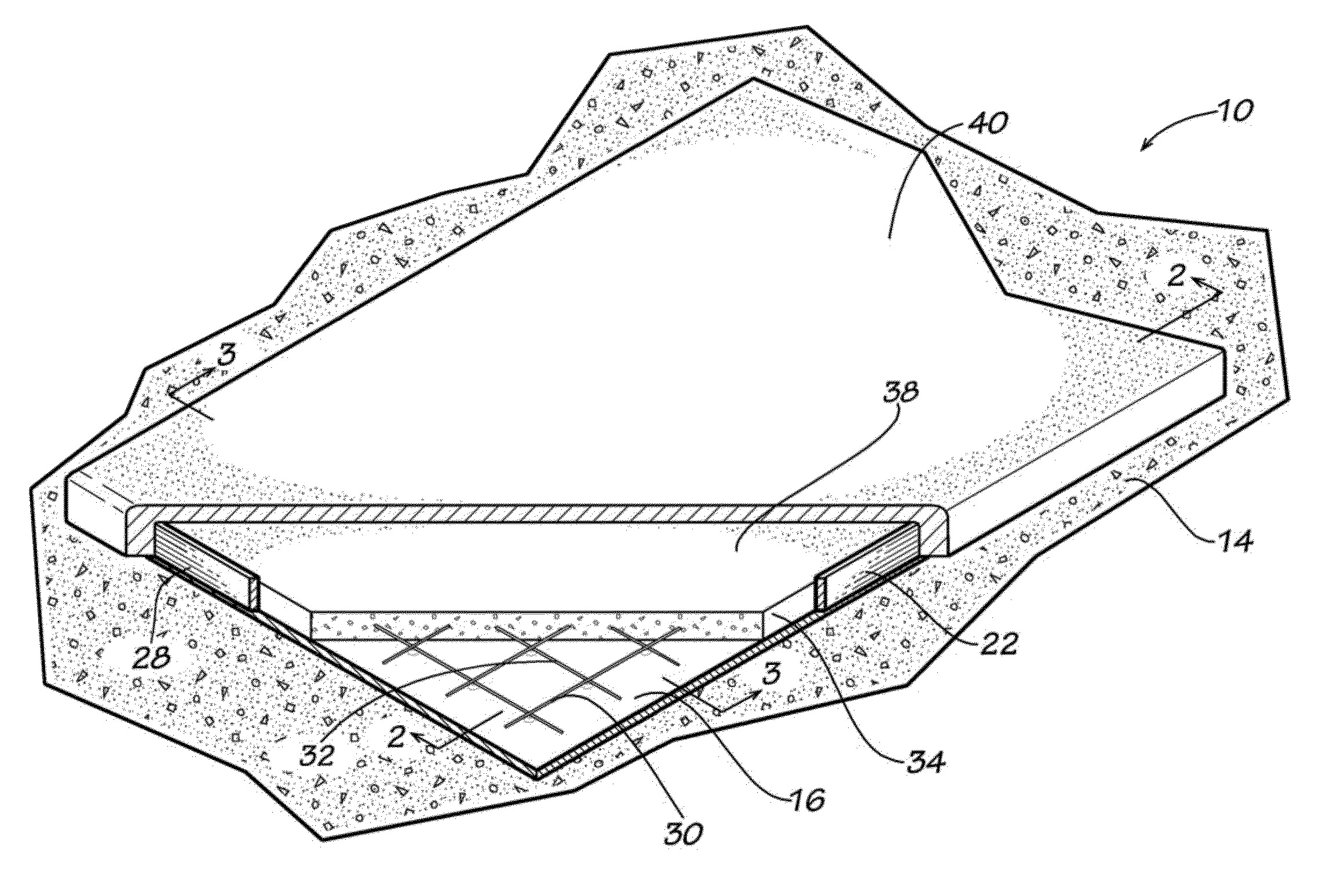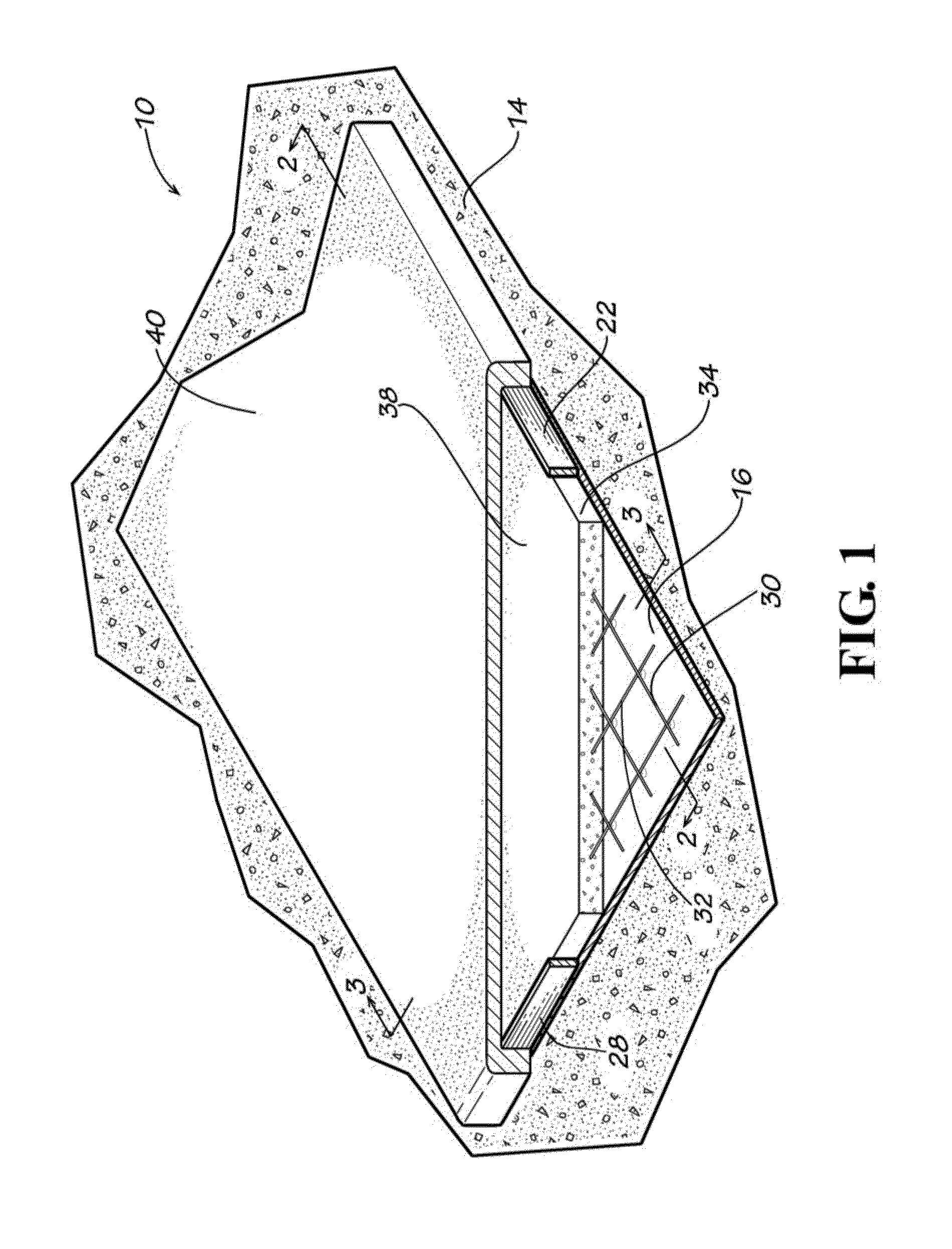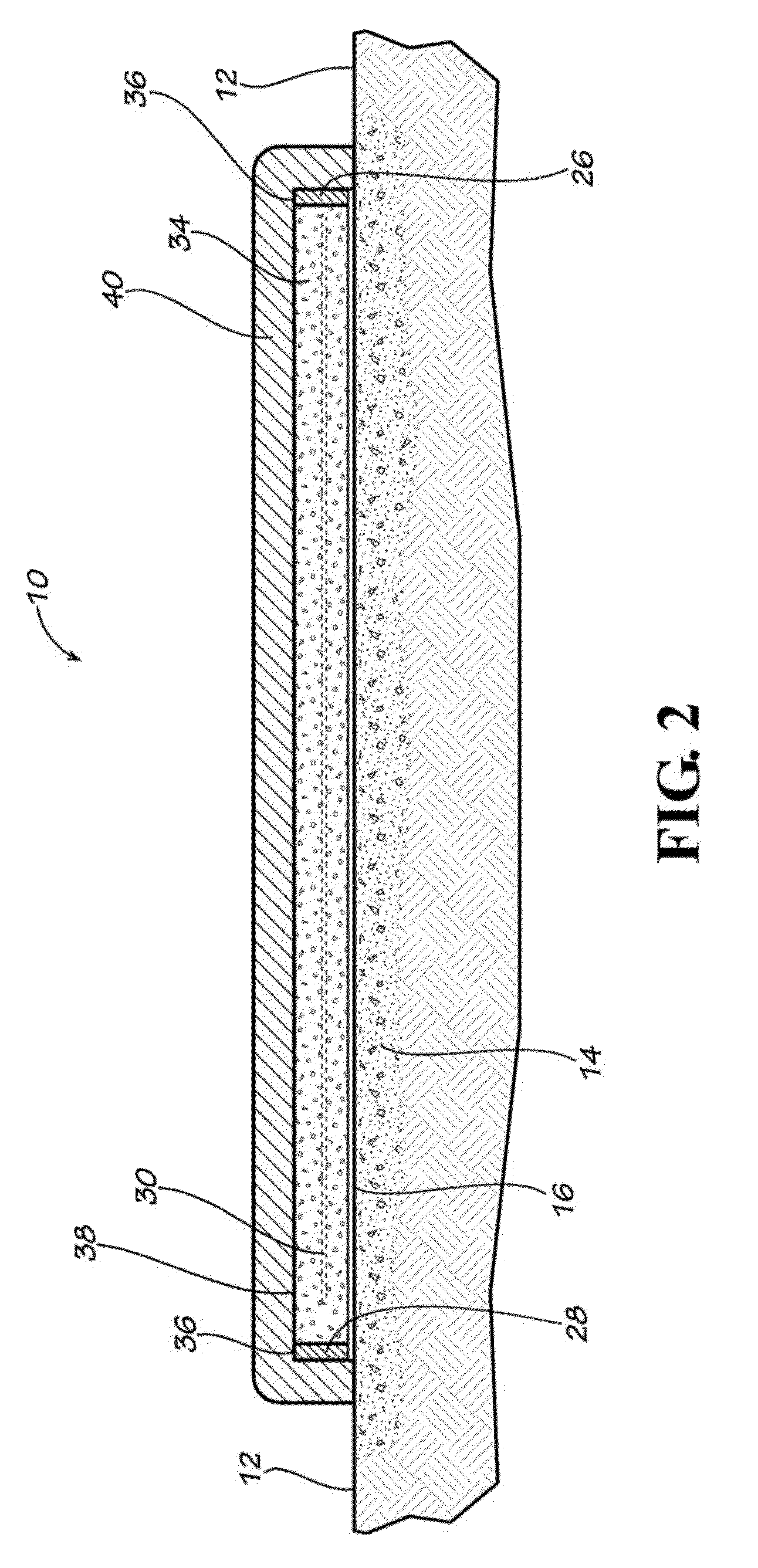Methods of making concrete runways, roads, highways and slabs on grade
a technology of concrete runways and slabs, applied in the direction of temporary pavings, building parts shaping, solid waste management, etc., can solve the problems of increasing the likelihood of shrinkage, cracking, curling, and cracking, and achieving the effect of improving the maturity and equivalent age, curing concrete slabs more quickly and improving the maturity
- Summary
- Abstract
- Description
- Claims
- Application Information
AI Technical Summary
Benefits of technology
Problems solved by technology
Method used
Image
Examples
example 1
[0073]Six horizontal concrete forms were set up side-by-side to form slabs on grade. The forms were erected outside, on the ground and were subjected to ambient weather and temperature conditions. Three forms were conventional 2 feet×8 feet wood forms. These forms were set for a six-inch thick slab on grade or precast such as tilt-up wall slab. Underneath each form a 6 mil polyethylene plastic sheeting was installed. Concrete placed in the conventional form was placed directly on the plastic sheeting and no covering was placed on the top surface of the concrete, except a 6 mil polyethylene plastic sheet to prevent moisture loss to the air. The other three forms were insulated concrete forms (i.e., Greencraft forms). The insulated concrete forms included conventional wood sides. However, each insulated concrete forms also included two 2 feet×8 feet panels of 4 inch thick expanded polystyrene foam. One of the expanded polystyrene foam panels was placed on the ground and formed the bot...
example 2
[0088]Maturity of concrete is measured as “equivalent age” and is given in temperature degrees×hours (either ° C.-Hrs or ° F.-Hrs). Maturity of concrete has became a useful tool in predicting the strength of concrete, particularly at ages earlier than 28 days and is related to the time and curing conditions, especially temperature. In this way, the maturity concept is also related to the rate of hydration and the rate of strength gain for a particular mix design.
[0089]The concrete maturity for the six horizontal slabs identified above in Example 1 was measured by the Intellirock II™ maturity / temperature loggers. A summary of this test data is shown in Table 2 below.
[0090]
TABLE 2ASTM C-42 Horizontal Forms Field Coring Conventional vs. Greencraft FormsTesting: Concrete Maturity (° C.-Hrs)Formulation No. 1Formulation No. 2Formulation No. 3MaturityConventionalInsulatedConventionalInsulatedConventionalInsulatedAgeFormGreencraftFormGreencraftFormGreencraftAgeAgeMaturityMaturityMaturityMat...
example 3
[0094]In accordance with ASTM 42, cored samples of the concrete from each different form described above in Example 1 were cored and tested by an independent, accredited concrete testing laboratory for determining compressive strength according to ASTM C-39. The cored samples of the concrete were tested at 3 days, 7 days, 28 days and 90 days. A summary of this test data is shown below in Table 3 below.
[0095]
TABLE 3FormulationHorizontalCompressive Strength (psi)No.Form Type3 days7 days28 days90 days1Insulated4,0804,7004,5305,640Conventional3,1303,5104,8405,4902Insulated2,2202,8303,6704,860Conventional1,3601,9004,9205,8303Insulated3,0203,7804,3904,860Conventional1,1502,5704,2004,390
[0096]The test data in Table 3 above surprisingly and unexpectedly shows that the formulations in the insulated concrete forms achieved better strength, and particularly much better early concrete strength, than the same concrete in the conventional forms. Specifically, at day 3 Formulation No. 1 had 30% hi...
PUM
| Property | Measurement | Unit |
|---|---|---|
| Fraction | aaaaa | aaaaa |
| Fraction | aaaaa | aaaaa |
| Fraction | aaaaa | aaaaa |
Abstract
Description
Claims
Application Information
 Login to View More
Login to View More - R&D
- Intellectual Property
- Life Sciences
- Materials
- Tech Scout
- Unparalleled Data Quality
- Higher Quality Content
- 60% Fewer Hallucinations
Browse by: Latest US Patents, China's latest patents, Technical Efficacy Thesaurus, Application Domain, Technology Topic, Popular Technical Reports.
© 2025 PatSnap. All rights reserved.Legal|Privacy policy|Modern Slavery Act Transparency Statement|Sitemap|About US| Contact US: help@patsnap.com



